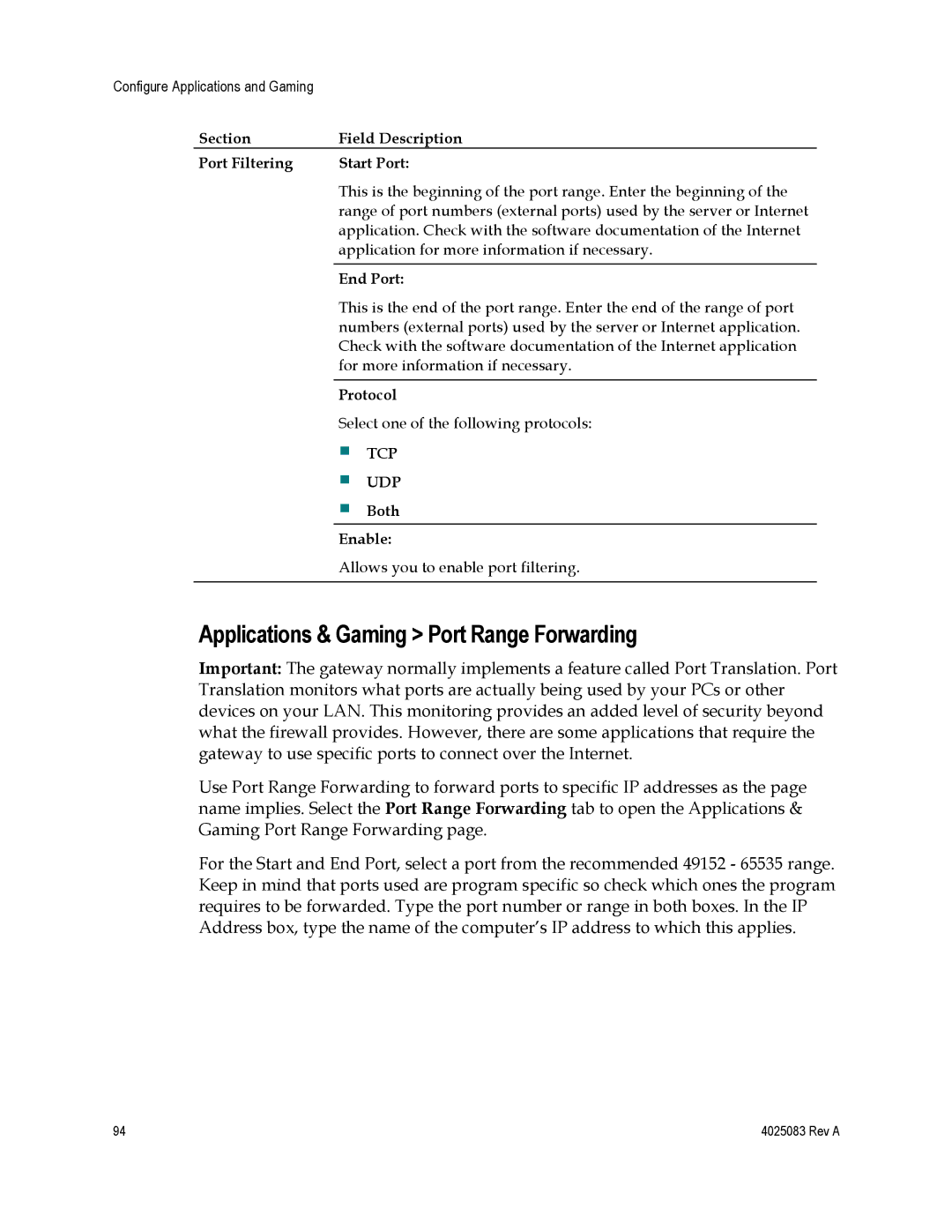
Configure Applications and Gaming |
| |
| Section | Field Description |
| Port Filtering | Start Port: |
|
| This is the beginning of the port range. Enter the beginning of the |
|
| range of port numbers (external ports) used by the server or Internet |
|
| application. Check with the software documentation of the Internet |
|
| application for more information if necessary. |
End Port:
This is the end of the port range. Enter the end of the range of port numbers (external ports) used by the server or Internet application. Check with the software documentation of the Internet application for more information if necessary.
Protocol
Select one of the following protocols: TCP
UDP Both
Enable:
Allows you to enable port filtering.
Applications & Gaming > Port Range Forwarding
Important: The gateway normally implements a feature called Port Translation. Port Translation monitors what ports are actually being used by your PCs or other devices on your LAN. This monitoring provides an added level of security beyond what the firewall provides. However, there are some applications that require the gateway to use specific ports to connect over the Internet.
Use Port Range Forwarding to forward ports to specific IP addresses as the page name implies. Select the Port Range Forwarding tab to open the Applications & Gaming Port Range Forwarding page.
For the Start and End Port, select a port from the recommended 49152 - 65535 range. Keep in mind that ports used are program specific so check which ones the program requires to be forwarded. Type the port number or range in both boxes. In the IP Address box, type the name of the computer’s IP address to which this applies.
94 | 4025083 Rev A |
